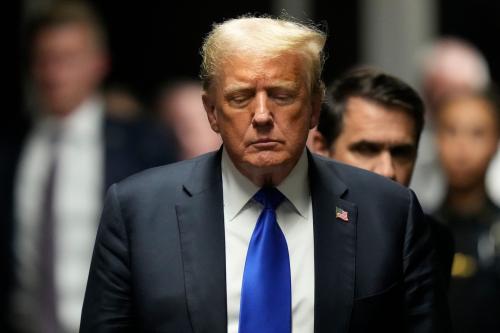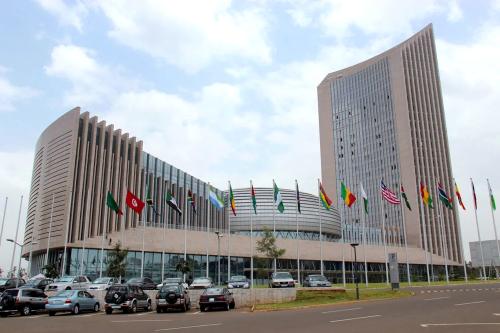There has been a long debate over the power of propaganda to influence public opinion. Are people susceptible to the latest wild rumor circulating on TikTok or are they, as writer Joseph Bernstein and others argue, able to hold independent beliefs and resist false narratives?
While public opinion optimists may be right in a number of cases, what they ignore in presidential elections is the manner in which the Electoral College increases disinformation risks. That is because in all but two states the Electoral College votes are awarded on a winner-take-all basis—hence very small vote margins can yield all the Electoral College votes. Have a look at the vote margins in some key states in 2016. In the five closest states, the winning candidate (Trump in four states and Clinton in one state) triumphed with a miniscule percentage of the vote.
False news purveyors don’t have to persuade 99% of American voters to be influential but simply a tiny amount in Michigan, New Hampshire, or Wisconsin. In each of those places, a shift of one percent of the vote or less based on false narratives would have altered the outcome.
The same pattern of a close election repeats itself in 2020. False news purveyors didn’t have to convince everyone voting in the closest states. They merely had to shift a miniscule number of people.
If the United States had direct popular voting for president, disinformation likely would pose little risk in 2024. We would not have to worry about a small number of swing areas as candidates would focus on voters from many states across the country. A vote in Arizona would be no more important than a vote in Florida, Texas, or Illinois. Without the Electoral College, it would be harder for those generating fake videos and audios to target specific geographic areas. Candidates would realize that any appeals in Phoenix, Detroit, or Milwaukee based on false information about voting, climate change, public health, or race relations could backfire and be offset by votes elsewhere for the other candidate.
Fear about a possible backlash is one of the major factors limiting propaganda effectiveness. People who don’t like blatant attempts to manipulate elections always can serve as a counterweight to those peddling falsehoods. If voters in California, Texas, or Florida object to false videos or narratives in Arizona that clearly run contrary to agreed-upon facts, they can in a direct popular election offset disinformation targeting voters in swing states. It is due to the existence of the Electoral College that the 2024 election could come down to a small group of voters in swing areas and enable disinformation disseminators to run highly targeted campaigns with questionable appeals in those places.
False targeted appeals are not the only election risk in 2024. Due to the Electoral College, under the radar manipulation could focus on a small number of voters without much visibility from anyone else. Candidates and their supporters can deploy fake robocalls, direct mail pitches, or launch social media campaigns that might be invisible to opposition candidates, the mainstream media, and independent fact-checkers. Disinformation could thrive without any public accountability from other political forces. Those efforts could lie so far below public visibility that disinformation could work without others even knowing about it or having a chance to rebut it.
The winner-take-all nature of state voting under the Electoral College further elevates the possible role of third party and independent candidates in deciding the outcome in particular areas. Disinformation disseminators don’t have to move voters from Biden to Trump or vice versa to be influential. Instead, disinformation could be effective by moving voters from Biden or Trump to Robert Kennedy, Jr, Jill Stein, or Cornel West. If any of those minor candidates draw votes disproportionately from Biden or Trump based on fake news, that effectively elects the other major party nominee through false material.
In all these respects, the United States faces disinformation risks that go way beyond the situation that exists in most other countries that are voting this year. There are major elections taking place in India, Indonesia, Europe, Mexico, and elsewhere. But in most of these nations, there is some form of direct popular voting for the chief executive or proportional voting for political parties that minimize the overall disinformation risks. It is harder to manipulate an entire country than a few cities in a couple of states as is the case currently in the United States due to the Electoral College.
The anachronistic Electoral College increases the importance of tiny groups of voters. There could be false information that is discounted by the vast swath of U.S. public opinion yet remains persuasive to the small number of people in Arizona, Michigan, or Wisconsin who will decide the presidential election.
At a time when America is plagued by extreme polarization and partisanship, and some Americans are eager to believe just about anything that reflects badly on the other side, the Electoral College elevates the power of questionable material to influence outcomes. False narratives could be completely ineffective with almost all U.S. voters but still decide the national election. It would be tragic if the 2024 election were decided by a small number of voters in a few states who cast their ballots on the basis of blatantly fake information.








Commentary
How the Electoral College increases disinformation risks
June 5, 2024